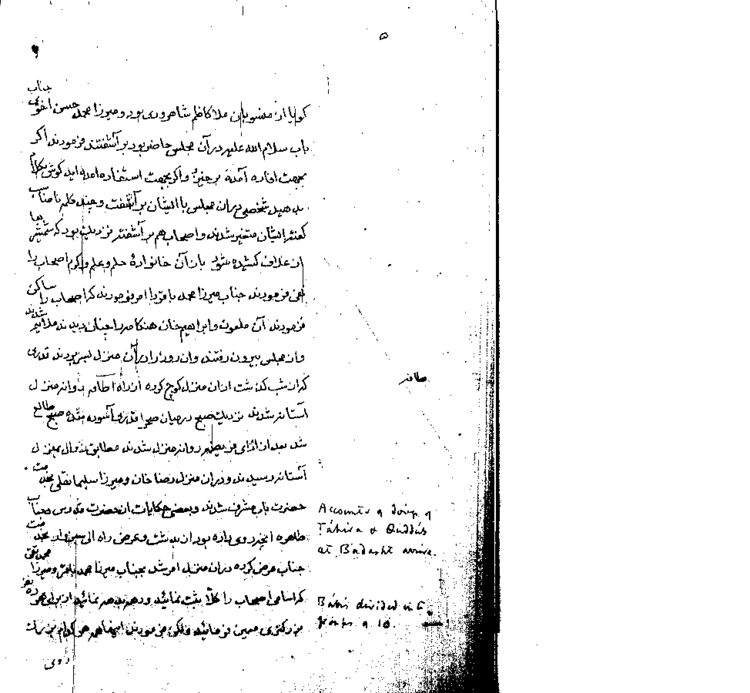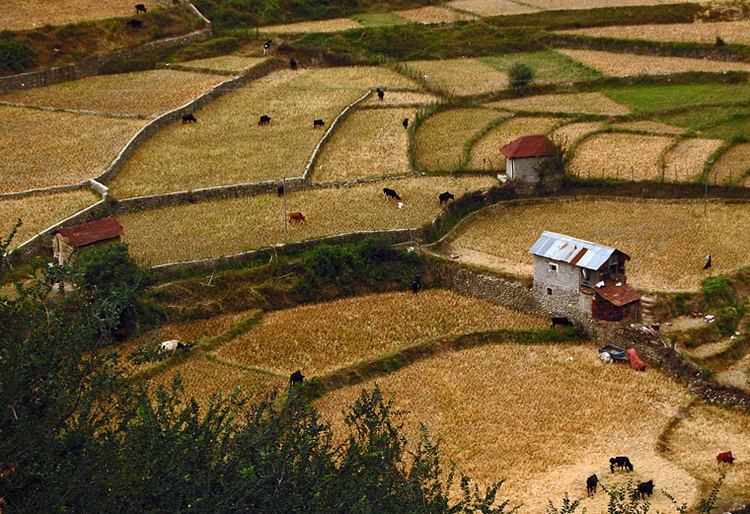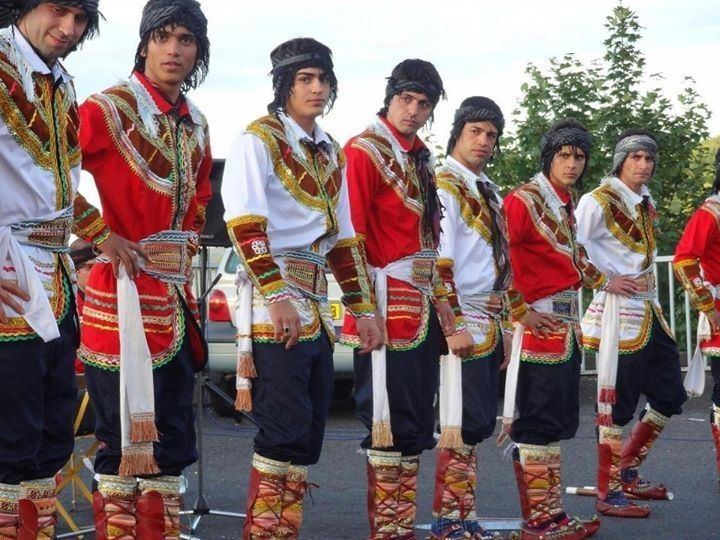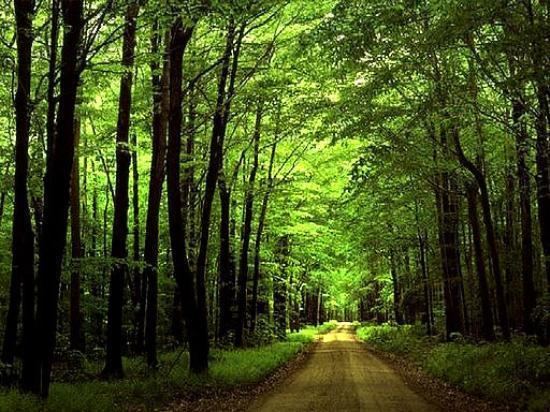Country Iran Area 23,842 km2 Population 3,073,943 | Capital Sari | |
 | ||
Destinations Sari, Babol, Amol, Qaem Shahr, Nowshahr Colleges and Universities University of Mazandaran (Babolsar), Mazandaran University of Medical Sciences (Sari), Babol University of Medical Sciences (Babol), Babol Noshirvani University of Technology (Babol), Sari Agricultural Sciences and Natural Resources University | ||
Languages spoken Mazandarani, Persian | ||
Map of Mazandaran Province
Mazandaran Province , (Persian: استان مازندران Ostān-e Māzandarān/Ostâne Mâzandarân), is an Iranian province located along the southern coast of the Caspian Sea and in the adjacent Central Alborz mountain range, in central-northern Iran.
Contents
- Map of Mazandaran Province
- Trip to northern iran mazandaran province
- Introduction
- Administrative divisions
- History
- Pre Islamic history
- Post Islamic history
- Geography
- Climate
- Demographics
- Railway
- Roads
- Airports
- Culture
- Language
- In literature
- Tourism
- People
- Food
- Economy
- Colleges and universities
- Sports
- Sister provinces
- References

Trip to northern iran mazandaran province
Introduction

Mazandaran Province is one of the most densely populated provinces in Iran and has diverse natural resources, notably large reservoirs of oil and natural gas. The province's four largest counties are Sari, Amol, Nur, and Tonekabon. It was founded in 1937.

The diverse nature of the province features plains, prairies, forests and rainforest stretching from the sandy beaches of the Caspian Sea to the rugged and snowcapped Alborz sierra, including Mount Damavand, one of the highest peaks and volcanos in Asia.

Mazandaran is a major producer of farmed fish, and aquaculture provides an important economic addition to traditional dominance of agriculture. Another important contributor to the economy is the tourism industry, as people from all of Iran enjoy visiting the area. Mazandaran is also a fast-growing centre for biotechnology.
Administrative divisions

The province covers an area of 23,842 km². Sari is the capital city of the province.
Mazandaran is divided into 15 counties (shahrestan in Persian). All the shahrestans are named after their administrative center, except Savadkooh.
History
Human habitation in the area dates back at least 75,000 years. Recent excavations in Gohar Tape in Behshahr provide proof that the area has been urbanized for more than 5,000 years, and the area is considered one of the most important historical sites of Iran. It has played an important role in cultural and urban development of the region. Mazandaran is one of the oldest areas Sedentism. Indigenous peoples of the region include the ethnic Mazanderanis, who speak an Iranian language which most closely resembles Gilaki and Sangiseri language, but also has phono-typical similarities to several Caucasian languages, reflecting the history of the region and its peoples. In the early 20th century, Reza Shah connected northern Elbourz to the southern slopes by constructing seven new roads and railways, the provinces of Mazandaran and Gilan became known as Shomal by all Iranians (meaning "the North" in Persian). Mazandaran is a Caspian province in the north of Iran. Located on the southern coast of the Caspian Sea, it is bordered clockwise by Russia (across the sea), Golestan, Semnan, Tehran, Alborz, Qazvin, and Gilan provinces. Sari is the largest city and the capital of Mazandaran province.
Mazandaran Province was made part of the First Region upon the division of the provinces into five regions solely for coordination and development purposes on June 22, 2014.
Pre-Islamic history
The territory known as Mazandaran has changed hands among various dynasties from early in its history. There are several fortresses remaining from Parthia and Sassanid times, and many older cemeteries scattered throughout the province. During this era, Mazandaran was part of Hyrcania Province which was one of the important provinces. In 662 CE, ten years after the death of Yazdegerd III the last Sassanian Emperor, a large Muslim army under the command of Hassan ibn Ali invaded Tabarestan. With the advent of the Sassanid dynasty, the King of Mazandaran (Tabaristan and Padashkhwargar) was Gushnasp, whose ancestors had reigned in the area (under the Parthian empire) since the time of Alexander the Great. In 529–536, Mazandaran was ruled by the Sassanid prince Kawus, son of Kawadh. Anushirawan, the Sassanid king, defeated Zarmihr, who claimed his ancestry from the legendary blacksmith Kaveh. This dynasty ruled the area till 645 AD, when Gil Gilanshah (a descendant of the Sassanid king Jamasp and a son of Piruz) joined Mazandaran to Gilan. There are several fortresses remaining from Parthian and Sassanid times, and many older cemeteries scattered throughout the province. During this era, Mazandaran was part of Hyrcania Province which was one of the important provinces. In 651 the Sasanian Empire fell, and all of the Sasanian domains gradually came under Arab control, except for the Caspian region of Iran (amongst which Tabaristan).
Post-Islamic history
Tabaristan maintained an existence independent of the Umayyad Caliphate which supplanted the Persian Empire in the early seventh century, with independent Zoroastrian houses like the Bavand and Karen fighting an effective guerilla warfare against Islam. A short-lived Alid Shiite state collapsed before the subsequent take-over by the Ziyarid princes. Mazandaran, unlike much of the rest of the Iranian Plateau maintained a Zoroastrian majority until the 12th century, thanks to its isolation and hardy population which fought against the Caliph's armies for centuries. During the post-Islamic period the local dynasties fell into three classes: local families of pre-Islamic origin; the ʿAlid sayyid; and local families of secondary importance.
The Bawandids, who claimed descent from Kawus, provided three dynasties. The first dynasty (665–1007) was overthrown on the conquest of Tabaristan by the Ziyarid Kabus b. Wushmgir. The second dynasty reigned from 1073 to 1210, when Mazandaran was conquered by 'Ala al-Din Muhammad Khwarzamshah. The third ruled from 1237 to 1349 as vassals of the Mongols. The last representative of the Bawandids was killed by Afrasiyab Chulawi.
The Karinids claimed descent from Karin, brother of Zarmihr who was the pre-Islamic ruler under the Sassanids. Their last representative Mazyar was put to death in 839.
The Paduspanids claimed descent from the Dabuyid of northern. They came to the front about 660 and during the rule of the ʿAlids were their vassals. Later, they were vassals of the Buyids and Bawandids, who deposed them in 1190. The dynasty, restored in 1209-10, survived till the time of Timur; the branch descended from Kawus the son of Kayumarth reigned till 1567 and the other, that of Iskandar the son of Kayumarth, till 1574.
In the 9th-11th century AD, there were repetitively military raids undertaken by the Rus' between 864 and 1041 on the Caspian Sea shores of Iran, Azerbaijan, and Dagestan as part of the Caspian expeditions of the Rus'.
In the Safavid era Mazandaran was settled by very large amounts of Georgians, Circassians, Armenians, and other Peoples of the Caucasus, whose descendants still live or linger across Mazandaran. Towns, villages and neighbourhoods in Mazandaran still bear the name "Gorji" (i.e., Georgian) in them, although most of the large amounts of Georgians, and Circassians are already assimilated into the mainstream Mazandaranis. The history of Georgian settlement is described by Iskandar Beg Munshi, the author of the 17th century Tarikh-e Alam-Ara-ye Abbasi, and both the Circassian and Georgian settlements by Pietro Della Valle, among other authors.
Geography
Mazandaran is located on the southern coast of the Caspian Sea. It is bordered clockwise by Golestan, Semnan and Tehran provinces. This province also borders Qazvin and Gilan to the west. Mazandaran province is geographically divided into two parts: the coastal plains, and the mountainous areas. The Alborz Mountain Range surrounds the coastal strip and plains of the Caspian Sea.
From the geographical point of view, Mazandaran province is divided into two parts i.e. coastal plain and the mountainous area. The Alborz Mountain Range like a huge wall has surrounded the coastal strip and plains of the Caspian Sea. Due to permanent sea breez and local winds of the southern and eastern coasts of the Caspian Sea, sandy hills are formed, causing the appearance of a low natural barrier between the sea and plain.
Ecoregions:
Climate
It has a variety of climates, including the mild and humid climate of Caspian shoreline and the moderate and cold climate of mountainous regions.
The western and central plains of the province, up to the northern foothills of Alborz Mountain Range, experience the mild climate of the Caspian region. In the 1,500- to 3,000-meter altitudes, there is a moderate mountainous climate, with long, cold winters, and short, mild summers. In this region, snow covers parts of the province even up to the middle of the warm season. In fact, snow can be observed in this region even in the warmest months of the year.
Demographics
The population of the province has been steadily growing during the last 50 years. The following table shows the approximate province population, excluding the Golestan province, which has separated as an independent province in 1998.
The population is overwhelmingly Mazandarani, with a minority of Azerbaijanis, Georgians, Armenians, Circassians, Turkmen, Gilaks and others.
In recent years the region has seen an influx of Iranians from other regions of Iran, many of them attracted by its nature and seaside.
Railway
Mazandaran is served by the North Railway Dept. of the Iranian Railways. The department connects the province to Tehran to the south and Gorgan to the east. The cities of Sari, Qaemshahr, and Pol Sefid are major stations of the department. The Mazandaran train station is the city's first modern rail station and it dates from the Pahlavi dynasty.
Roads
Mazandaran is connected to Tehran by Haraz road (Amol-Rudehen), Kandovan road (Chalus-Karaj), and Firoozkooh road (Qaem Shahr-Rudehen).
Airports
Dasht-e Naz Airport, serving the capital Sari, Noshahr Airport, and Ramsar International Airport are the domestic airports that connect the province to the other parts of the country.
Culture
The peoples of the two provinces are largely secular, and consequently women have had greater social freedom and independence than their Persian cousins.
Language
Mazanderani or Tabarian is a Northwestern Iranian language. Various Mazandarani dialects exist which are spoken in Mazandaran province and the neighbor province Golestan such as Mazanderani, and Gorgani and possibly Qadikolahi (Ghadikolahi) and Palani. Today, Mazandaranis also use Persian (Western Persian). The educated can communicate and read Persian well.
A slightly different version of the eastern dialect of the Gilaki language is spoken in the city of Ramsar.
A dialect of Azeri is spoken in the town of Galoogah.
In literature
In the Persian epic, Shahnameh, Mazandaran is mentioned in two different sections. The first mention is implicit, when Fereydun sets its capital in a city called Tamishe near Amol:
بیاراست گیتی بسان بهشت.................... به جای گیا سرو گلبن بکشت
از آمل گذر سوی تمیشه کرد .............. نشست اندر آن نامور بیشه کرد
And when Manuchehr is returning to Fereydun's capital, Tamisheh in Mazandaran (known as Tabarestan), after his victory over Salm and Tur
In the second section, a region called Mazandaran is mentioned in the Kai Kavoos era; it is an area which is mostly inhabited by Div (demons). The legendary Iranian Shah Kaykavoos, as well as the Iranian hero Rostam, each take turn to go to Mazandaran in order to battle the demons.
In a verse from Shahnameh, Zal tells Kai Kavoos: "I heard troubling news that the king is planning to go to Mazandaran".
However, this Mazandaran is not considered identical to the modern province of Mazandaran, and is instead a land to the west of Iran. The current province was simply considered a part of Tabaristan; the name Mazandaran is a later development, perhaps based upon local terminology.
In Gaston Leroux's The Phantom of the Opera, one of the characters was formerly the daroga (chief of police) of Mazanderan.
Tourism
Over 15 million Iranian and some 400,000 foreign tourists visit the province annually. More than 800 registered historical and cultural sites, 338 kilometers of shorelines, mineral springs in jungles and mountains, waterfalls, and caves are among the major tourism attractions in the Mazandaran province.
People
People from and/or active in Mazandaran Province or its historical region include:
Food
The cuisine of the province is very rich in seafood due to its location by the Caspian Sea, and rice is present in virtually every meal. Mazandarani cuisine is diverse between regions; the cuisine of coastal regions is different from mountainous regions, as peoplein the Alborz usually use the indigenous herbs and coastal people use the dishes of fish and Caspian Mazandaran rice with vegetables.
Economy
The province is one of the 5 wealthiest in Iran. Rice, grain, fruits, cotton, tea, tobacco, sugarcane, and silk are produced in the lowland strip along the Caspian shore. Oil wealth has stimulated industries in food processing, cement, textiles, cotton, and fishing (caviar). Iran's Cultural Heritage Organization lists close to 630 sites of historical and cultural significance, many of which are tourist attractions. Rice, grain, fruits, cotton, tea, tobacco, sugarcane, Flower, Mineral water and silk are produced in the lowland strip along the Caspian shore. Oil wealth has stimulated industries in food processing, cement, textiles, cotton, and fishing (caviar).
Colleges and universities
Main universities of Mazandaran:
Sports
For the past several years Mazandaran has generated a consistent stream of wrestlers. Football and volleyball are two other popular sports that have a lot of players in the Premier League and the national team. Weightlifting, Taekwondo, table tennis, boxing, kickboxing, kung fu, karate, rally car are other successful sports in the province. Kalleh Mazandaran VC and Shamoushak Noshahr F.C. and F.C. Nassaji Mazandaran are three famous teams in the province. Kalleh have twice won the Iranian Volleyball Super League championship and once the AVC Championship.
Mazandaran has hosted sports tournaments such as the Wrestling World Cup. Nine athletes from Mazandaran have received medals at the Olympic Games. In the 2016 Persian Gulf Pro League, fifty mazandarani players in different teams attended.
